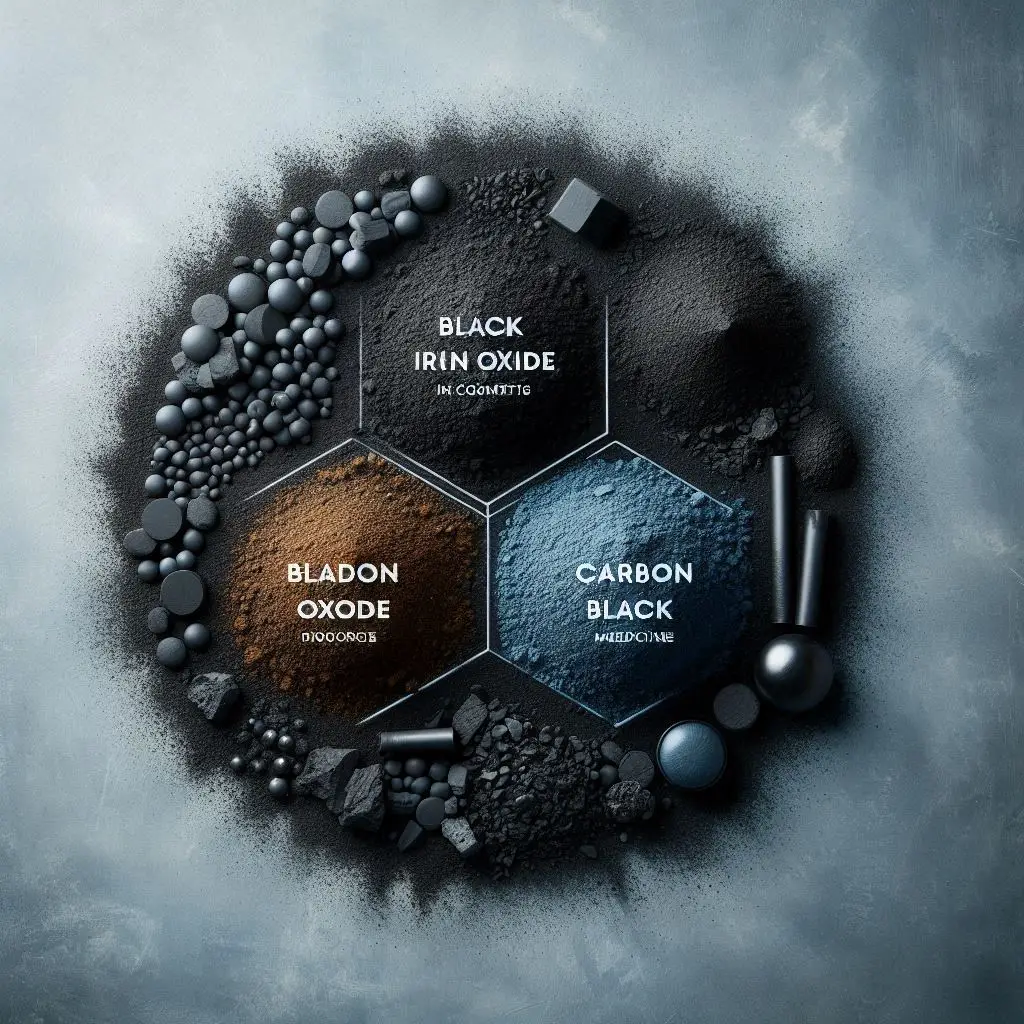
Black Iron Oxide Pigment Concrete in Cosmetics vs Carbon Black Medicine
Introduction
Pigments play a vital role in both the cosmetic and medical industries, offering versatile applications that range from enhancing beauty products to advancing medical treatments. Among these, black iron oxide and carbon black are two prominent pigments widely used in various formulations. While both serve as effective colorants, their unique properties and uses in cosmetics and medicine differ significantly. This article explores the role of black iron oxide pigment in cosmetics, comparing it to carbon black, and further investigates its diverse medical applications, with insights into both pigments' contributions to healthcare and beauty.
Black Iron Oxide in Cosmetics
Black iron oxide, known scientifically as CI 77499, is a widely used pigment in the cosmetic industry. As an iron-based dark pigment, it imparts a rich, stable black hue to a variety of cosmetic products, including eyeliners, mascaras, lipsticks, and eyeshadows. Its popularity stems from its excellent stability, which ensures that the color remains vibrant and does not fade easily, even with long-term wear.
One of the standout qualities of black iron oxide is its safety profile. It is authorized by major regulatory bodies, including the FDA in the United States and the European Union's Scientific Committee on Consumer Safety (SCCS), for use in cosmetics. These agencies have verified that when used within the recommended limits, black iron oxide poses no health risks to consumers.
Furthermore, black iron oxide is highly compatible with various cosmetic bases, whether liquid, powder, or cream, making it incredibly versatile in formulation. This allows manufacturers to create different product textures and finishes while maintaining the integrity of the color.
Iron Oxide Black vs Carbon Black
When it comes to creating a rich black pigment in cosmetics, both iron oxide black and carbon black are used. However, there are notable differences between the two that affect their applications and overall performance.
Iron Oxide Black (CI 77499): Iron oxide black is a natural mineral pigment made from iron. It is known for its stability, resistance to fading, and compatibility with a range of other ingredients. It provides a more natural black color compared to carbon black, with a slightly warmer hue that blends well in many cosmetic formulations. It is also considered safer for use in cosmetics due to its non-reactive nature.
Carbon Black: Carbon black, on the other hand, is an elemental form of carbon that results from the incomplete combustion of hydrocarbons. It is prized for its deep black color and strong opacity, offering excellent tinting strength. Carbon black is particularly favored in applications that require intense pigmentation, such as jet-black eyeliners and mascaras. However, it is more prone to causing irritation for some users, which is why its use in cosmetics is more regulated, with strict limits on its concentration in beauty products.
Both pigments are approved for use by the FDA and SCCS, though manufacturers must adhere to specific guidelines regarding their application to ensure safety and efficacy.
Black Iron Oxide in Medicine
Beyond cosmetics, black iron oxide (Fe3O4), also known as magnetite or ferrous ferric oxide, has found a wide range of applications in the medical field. Its unique properties, including its magnetic characteristics, make it particularly valuable in diagnostic imaging and therapeutic treatments.
One of the most significant uses of black iron oxide in medicine is as a contrast agent in magnetic resonance imaging (MRI). Black iron oxide nanoparticles, when coated with a biocompatible material, are used to enhance the clarity of MRI scans. By improving the contrast between tissues, these nanoparticles allow for more accurate visualization of anatomical features, helping doctors to diagnose conditions with greater precision.
Another promising application of black iron oxide is in targeted drug delivery systems. Thanks to its magnetic properties, black iron oxide nanoparticles can be loaded with therapeutic agents and directed to specific areas of the body using external magnetic fields. This targeted approach helps reduce side effects by ensuring that the medication is delivered precisely to the area requiring treatment.
Furthermore, black iron oxide nanoparticles are being studied for their role in hyperthermia treatment, a method used in cancer therapy. When exposed to a magnetic field, these nanoparticles generate localized heat, which can be used to selectively kill cancer cells. This offers a promising alternative to traditional cancer treatments, with the potential for fewer side effects.
Black iron oxide’s applications also extend into regenerative medicine. Researchers are investigating its use in scaffolds and biomaterials designed to promote cell adhesion, proliferation, and differentiation, which are essential in tissue engineering and regenerative therapies. The magnetic properties of black iron oxide further aid in aligning and guiding cells, enhancing the tissue regeneration process.
Conclusion
Both black iron oxide and carbon black play significant roles in the cosmetic and medical industries, each offering distinct advantages. In cosmetics, black iron oxide is favored for its stability, safety, and versatility, making it a preferred choice for long-lasting products. On the other hand, carbon black provides a deeper, more opaque black pigment, ideal for intense pigmentation in certain cosmetic applications.
In the medical field, black iron oxide stands out for its biocompatibility and magnetic properties, finding uses in diagnostic imaging, drug delivery systems, cancer treatment, and regenerative medicine. While carbon black’s medical applications are more limited, it still contributes to various industrial uses.
Understanding the unique properties of these pigments allows manufacturers and medical professionals to make informed decisions when selecting materials for specific applications. The ongoing exploration of black iron oxide in medicine holds exciting possibilities, and its role in both cosmetics and healthcare will continue to evolve.

